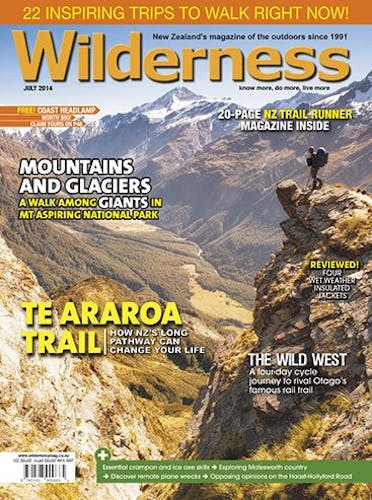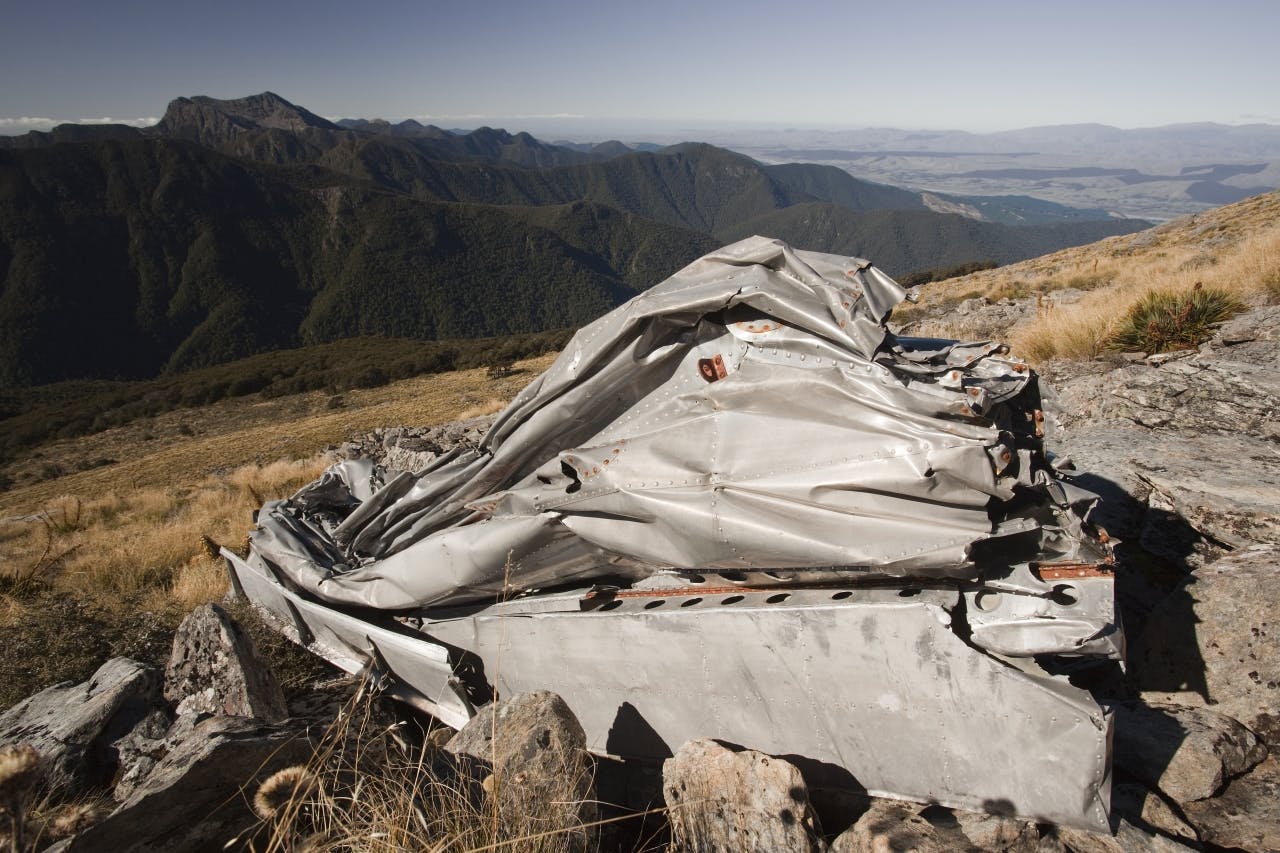Tragic accidents have resulted in many planes disappearing in the New Zealand wilderness. Here are three places to visit wreckage from those that have been found
Numerous plane crashes have occurred in the New Zealand mountains, often with tragic consequences. The story of pioneer aviator Hamish Armstrong is one example. A Hawke’s Bay sheep and beef farmer, Armstrong had been taught to fly in Britain where he’d bought a Gypsy Moth plane in 1929. Back in New Zealand, the popular pilot clocked up hundreds of hours of air time and made innovative use of his Moth for transporting farm supplies.
On July 21, 1935, Armstrong left his Akitio farm, near Dannevirke, headed for Hastings in his plane. He never arrived. An extensive aerial search ensued, involving up to 20 aircraft and covering several hundred square miles, but with no sign of the missing aviator. Widely separated witness accounts reported hearing a plane on the day it went missing, which was possibly because Armstrong had flown for some distance, seeking a way out to safety beneath clouds. Newspapers ran increasingly despondent headlines, such as ‘Missing Airman’, ‘Still Missing’ and ‘Hope Fading’.
Ground parties searching the Ruahine Range were hampered by bad weather and deep snow. One searcher stated, ‘no one who has not been in that country can realise with what rapidity mists develop, and even the most experienced bushmen and trampers run a grave risk of being hopelessly lost in uncertain weather’.
It was not until two weeks later that a party of trampers including Ian Powell (a key figure in both the Tararua and Hutt Valley tramping clubs) discovered Armstrong’s plane, partly damaged but largely intact on a saddle near Buttercup Hollow. Seemingly, Armstrong had made a forced landing, probably after running out of petrol, and in such poor visibility and tough terrain had managed a commendable job.
Powell saw possible blood stains in the snow, but no other sign of Armstrong. Presumably he’d survived the crash, but injured and probably at risk of hypothermia, had sought shelter below the snowline. Difficult winter conditions meant the search was eventually called off, with hopes that his body might be found the following summer. But it was not to be.
Armstrong remained a ‘Ruahine Mystery’, as one newspaper put it, and apart from a shirt of the brand name ‘Triple X’, possibly belonging to the aviator, nothing was ever found of him. Triplex Hut and Armstrong Saddle commemorate the pilot who survived the crash but not the wintery mountains.
Armstrong Saddle, Ruahine Forest Park
Armstrong Saddle is an easy stroll from Sunrise Hut, one of the most accessible and popular huts in the Ruahine Range. It’s reached on a good all-weather track. While there are no wreck remains left on site (the engine was salvaged by Armstrong’s brother, and the rest of the plane burned), there is an information panel showing historic photographs.
Shingle Slip Knob, Tararua Forest Park
In 1955, an RNZAF De Havilland Devon (NZ1815) crashed into Shingle Slip Knob while undertaking a routine training flight. Both those on board, RNZAF flight lieutenants Edward Casey and William Trott, were killed and two simple wooden crosses mark the site of their untimely demise. For many years, the plane wreckage was marked on maps as an emergency shelter. Although the fuselage was largely intact, the angle of the slope would have put me off staying there in anything but the direst circumstances. Trampers wanting to visit the wreck can approach it from Jumbo Hut.
Johnston Peak, Mt Richmond Forest Park
In May 1942, a Lockheed Electra 10A aircraft, Kereru, went missing over the Richmond Ranges on a commercial flight between Wellington and Nelson, resulting in possibly the largest search ever undertaken in the region. The range’s ultramafic rock interfered with the searchers’ radios, and so they instead used messenger pigeons for communication.
Eventually, after five days, searchers found wreckage near Mt Richmond. Tragically, all five on board were killed. Mt Fell was named in memory of passenger Pamela Fell, a keen tramper, while Johnston Peak commemorates the pilot, Keith Johnston. Wreckage remains scattered over the peak’s eastern slopes. A plaque was erected in the vicinity in 1992.








